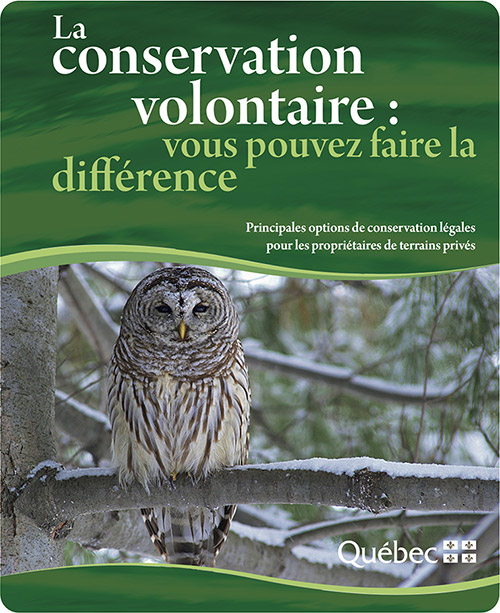Protected Land

The Land Trust already protects more than 400 hectares (1000 acres) of wildlands in the Township of Potton. It also holds the conservation servitude for a large portion of the Réserve naturelle des montagnes vertes, which is owned by Nature Conservancy Canada.
Your ecological donations could be added to this large territory already protected in perpetuity.
How to preserve private wildlands
Video prepared by the Réseau des milieux naturels (in french only).
Voluntary conservation options
Voluntary conservation is a process by which the owner takes responsibility for the protection of our natural heritage for the benefit of the community. It is also called private or community stewardship, derived from the term Conservation Stewardship. Several conservation options use the mechanisms proposed within the Quebec legislative context. There are two main categories depending on whether an owner wishes to retain his right of ownership or whether he wishes to donate his land.
| Conservation option | You remain owner | Reduction of taxes | Legal Agreement | Description |
|---|---|---|---|---|
| Declaration of Intent | Yes | No | No | Moral commitment by an owner based on honour, through which he expresses the desire to preserve the natural attractions of his property. |
| Conservation Plan and an agreement for managing and ennhancing habitat | Yes | No | No | An agreement in which an landowner and a conservation organization agree to work together to manage, develop and enhance the natural features of a property. |
| Conservation Servitude | Yes | Yes | Yes | An agreement between a landowner and a conservation organization in which the landowner gives up certain rights in his or her property. |
| Natural reserve for a private landowner | Yes | Yes | Yes | Legal commitment by which a property owner undertakes to protect the natural features of his or her property in accordance with the Loi sur les réserves naturelles en milieu privé. |
| Selling a property to a conservation organization | No | Yes | Yes | A property owner sells his property to a conservation organization. He or she may decide to sell at a discount or at the market value of the property. |
| Donation of property | No | Yes | Yes | An owner donates his or her property to a conservation organization. |
Conservation option
| Declaration of Intent | |
|---|---|
| You remain owner | Yes |
| Reduction of taxes | No |
| Legal Agreement | No |
| Description :
Moral commitment by an owner based on honour, through which he expresses the desire to preserve the natural attractions of his property. |
|
| Conservation Plan and an agreement for managing and ennhancing habitat | |
|---|---|
| You remain owner | Yes |
| Reduction of taxes | No |
| Legal Agreement | No |
| Description :
An agreement between a landowner and a conservation organization to work together to manage, develop and enhance the natural features of a property. |
|
| Conservation Servitude | |
|---|---|
| You remain owner | Yes |
| Reduction of taxes | Yes |
| Legal Agreement | Yes |
| Description :
An agreement between a landowner and a conservation organization in which the landowner gives up certain rights in his or her property. |
|
| Natural reserve for a private landowner | |
|---|---|
| You remain owner | Yes |
| Reduction of taxes | Yes |
| Legal Agreement | Yes |
| Description :
Legal commitment by which a property owner undertakes to protect the natural features of his or her property in accordance with the Loi sur les réserves naturelles en milieu privé. |
|
| Selling a property to a conservation organization | |
|---|---|
| You remain owner | No |
| Reduction of taxes | Yes |
| Legal Agreement | Yes |
| Description :
A property owner sells his property to a conservation organization. He or she may decide to sell at a discount or at the market value of the property. |
|
| Donation of property | |
|---|---|
| You remain owner | No |
| Reduction of taxes | Yes |
| Legal Agreement | Yes |
| Description :
An owner donates his or her property to a conservation organization. |
|
To know more about it
As an affiliated member of Appalachian Corridor, the Ruiter Valley Land Trust can work together with their team to complete the process that will lead to an ecogift.
Several steps are required to carry out this project: a habitat inventory by biologists, establishment of a conservation plan, a title deed search, submission of the file to the ecogift program, registration by a notary, etc.
The conservation organization assumes the costs related to the preparation of the file.

